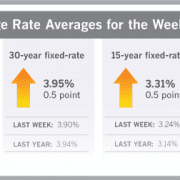A User’s Guide To Fairfield County Wells
Compared to town water, owning a well may sound difficult or inconvenient. In reality, owning and operating a well system is as simple as following a few easy rules of thumb. Like most of the components in a modern house, wells are optimized to be relatively low-maintenance and easy to use.
Modern residential wells typically bottom out at around 60 feet below the ground. To combat potential surface contamination, wells are generally sealed with clay or another sealant material. The pipes that travel down to the water are usually of steel or PVC piping. However, the materials and specifics of each well will vary by driller. Generally speaking, the exact materials in your well will not affect the types of safety and maintenance precautions that you should take on a daily basis.
A yearly well check-up is the best form of preventative maintenance. Replacing the well pump alone can cost in excess of $4000 and a new well system can cost around $20,000 in areas with rocky soil like Ridgefield. The good news is that a well-maintained well will last more than 20 years. By following just a few simple tips, your well and the water it produces will remain potable and plentiful for years to come.
The yearly check-up should cover four basic points. It will test the flow and function of the mechanical components through checking pump performance, water levels, and the function of the pressure tank. Second, the system will be checked to ensure that it meets sanitation and local requirements. In addition, the water will be checked for a variety of contaminants such as bacteria, nitrates and non-biological contaminants like iron, manganese, high mineral levels, and sulfides. Finally, the inspector will give you a concise report of his findings that, by Connecticut law, will be given to you and archived by both the well company and government. Store your well records to ensure that you have proper documentation in the event that a problem arises.
Unlike a septic system, there are relatively few ways that the average homeowner can accidentally ruin his well. The most common way of disrupting the well’s function is by exceeding its capacity and running the well dry. Connecticut law proscribes a number of acceptable combinations of production and storage capacity. These regulations are designed to allow homeowners to use reasonable amounts of water without running their wells dry. Generally speaking, it is best to avoid doing multiple water-heavy activities at once. For example, avoid doing laundry, taking a shower, and using the dishwasher simultaneously.
In addition to guidelines for water usage, remember these tips about maintaining the safety of your water. Find out precisely where your well is and avoid storing and using toxic chemicals within 50 feet of the well. Paint, fertilizer, pesticides, and motor oil are just a few examples of materials to be avoided. In addition, avoid back-siphonage by keeping hoses out of receptacles that are being used to mix contaminating materials such as lawn fertilizers. Also, ensure that your home, waste systems, chemical storage, and well are properly separated. Periodically check that your well cap has remained properly sealed. When rodents or other small creatures become lodged in the system, the quality and taste of your water may be compromised. Also keep your well cap clear of excess snow, leaves, and other detritus.
By following just a few simple guidelines about the care of your well, you are sure to enjoy plenty of high-quality water for years to come.
For official documentation about well specifications and stipulations, please see the following laws, hosted by the University of Connecticut.
For additional information about wells and their maintenance, see this article from On Tap.












